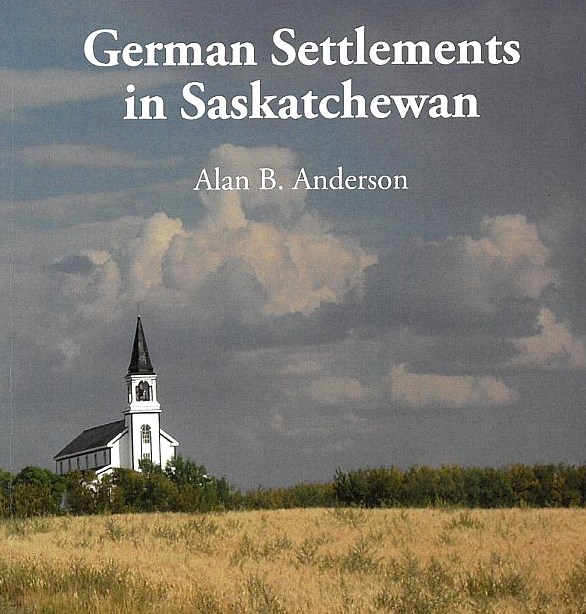German Settlements in Saskatchewan
By Alan B. Anderson
Published by Saskatchewan German Council Inc.
$20 ISBN 9780969401674
Growing up I heard stories about my grandmother's job as the postmistress of Krupp and of the acres of sunflowers planted by German farmers surrounding my grandparent's land just north of Fox Valley. When my sister and I went looking for Krupp we found no evidence of it, although someone speculated that a large feed bin was once the old post office.
I could have used this meticulously researched history of the province's settlements in my searches. It would have explained to me that many of the Russian-German settlements spanning an expansive territory bordered by Medicine Hat, Leader and Maple Creek, including my French-Canadian- Métis-Scottish-American grandparents’ farm, had changed their names after both world wars.
When Leader became the "de facto centre of the settlements" in 1913 it was actually named Prussia. But during the First World War the town name was changed along with street names like Berlin, Kaiser and Hamburg. No doubt Krupp suffered the same fate. Prelate was also a name I'd heard as a child. I knew there was a church there, just 10 kilometres down the road from Leader, and that it was an important Catholic German parish. But I didn't realize that its St. Angela's Convent, established in 1919, closed in 2007 and became the Islamic Academy of Saskatchewan in 2011.
Having attended workshops at St. Peter's Academy, I was also interested to learn that the nearby church in Meunster was constructed from 1908 to1910 and was decorated with artworks created by Count Berthold von Imhoff. Imhoff was born in a castle on the Rhine, emigrated to Pennsylvania in 1892, then moved to Saskatchewan in 1914. All told he decorated 112 churches in Saskatchewan's German colonies.
Most German settlers came to Saskatchewan after Empress Catherine II reneged on her promise to protect farmers by granting religious freedom, exemption from military service and political autonomy in newly annexed Â鶹´«Ã½AV Russian land, later to be known as the Ukraine. Many Mennonite Germans chose to emigrate to Canada to escape persecution, because not only was land plentiful and readily available, but settlers were encouraged to organize their own colonies. They were promised exemption from military service here, as well. However, there was no mention made of the removal of Indigenous people to reserves.
The story of Mennonite and Lutheran settlements on Treaty 6 land illustrates how reconciliation works in the 21st century. In 1876 30 square miles of Reserve 107 land had been "given" to the Chippewayn Cree. It was, of course, land that was theirs to begin with. The land was reconfiscated 1897 and then sold to the unwitting Mennonites who began to farm it. It wasn't until 2006 that Mennonites and Cree sat down to a picnic presided over by the Human Rights Commission to decide on reparations. The conversation is ongoing, and is just one of many essential historical details concerning German religion, language and culture embedded in this slim volume.
This book is available at your local bookstore or online at skbooks.com.




